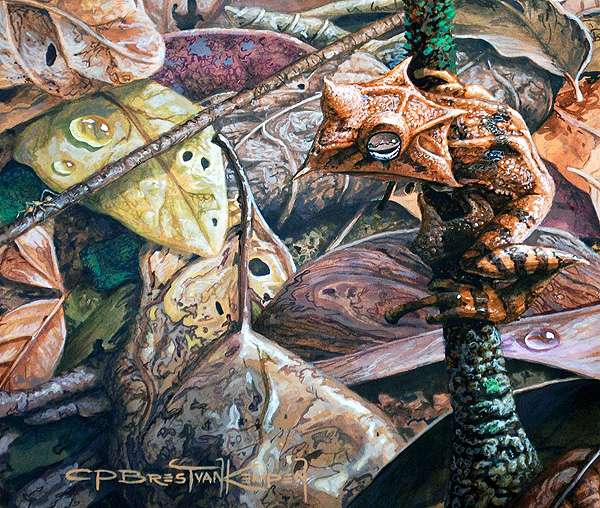NORTHERN CASQUE-HEADED
TREEFROG (2008)

Acrylic on
illustration board 6" x 7"
| In
the tropical rainforests of Panama and northern South America,
five species of bizarre little frogs haunt the understory. Up
to two inches in length, their lack of size is more than made
up for by a fierce countenance and attitude. Their big, armored
heads are triangular and bear several large thorns. A pair of
“tusks,” which are actually bone spurs, stud the lower
jaw. These are used for defense and to subdue prey, which tends
to be large in relation to the frog. Long considered members
of the typical treefrog family, Hylidae, today the casque-headed
frogs (Hemiphractus spp.) are believed to have diverged
from other frog taxa some time back, and are generally given
their own family. Living on or near the forest floor, they usually
mate on dry land. After fertilizing the eggs, the male places
them on the female's back, where they adhere to a specialized
patch of skin. Undergoing metamorphosis while still in the eggs,
the young emerge as tiny, fully-formed frogs. The northernmost
member of this genus, H. fasciatus, is found in Colombia,
Panama, and probably Costa Rica as well. Like many frog species,
the Northern Casque-headed Frog has undergone a stark decline
in numbers over the past two decades. |
|